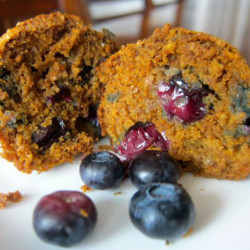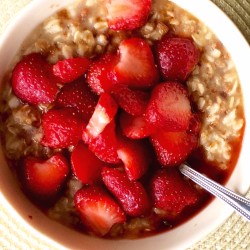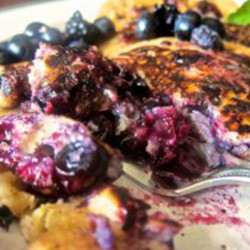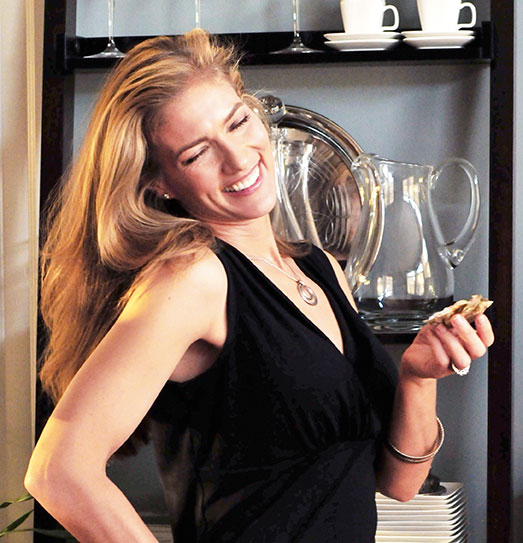Saturday, March 30, 2013
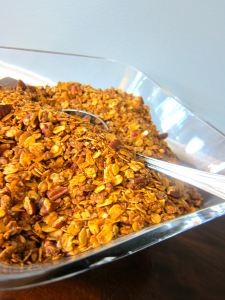 I enjoy making my own granola a few times a year. I mean, what’s not to like about toasty oats, all crunchy and sweet?
I enjoy making my own granola a few times a year. I mean, what’s not to like about toasty oats, all crunchy and sweet?
Well, tastiness aside, there’s actually a bunch not to like about granola, at least from a nutrition perspective. Compared to other ready-to-eat cereals—the way it’s often consumed—it’s very high in calories due to added sugar and fat, often saturated or trans, all of which are risk factors for heart disease and type 2 diabetes. For these reasons, there are many better choices for your regular breakfast, say, oatmeal or peanut butter on whole grain toast. Even high-protein egg dishes tend to be more healthful, especially when combined with loads of veggies like my breakfast taco or Southwestern scramble when you need a higher-energy meal. Granola is okay every now and again, sure, like muffins or pancakes (think: moderation)—but made or bought the traditional way it’s definitely not the best everyday breakfast.
So why today’s post, then? Well, for two reasons. First the “what.” Like all of my baking, such as yesterday’s dark chocolate chunk cookies with dried cherries and pecans, I always look for an opportunity to make foods I know people like (and I do, too) in a way that maximizes nutrition while maintaining the character of the original dish. It’s for this reason that instead of using just oats in my granola I include a few other good-for-you things, like wheat germ, flax seeds, and quinoa flakes. These additions increase the fiber, protein, and omega-3 fatty acids among other vitamins, minerals, and nutrients that you get by increasing the diversity of the ingredients beyond the traditional oats. The quinoa flakes were a new incorporation today, since I was particularly looking to up the protein in my granola (which is otherwise pretty much all carbs with some fat).
Which brings me to the “when.” Today’s granola-making was instigated by my desire to create a recipe for peanut butter protein balls for my readers who are fitness enthusiasts. I have the upcoming Boston Marathon on my mind, you see, and I’ve been pondering a convenient post-workout protein boost. More generally speaking, I keep granola around in the fridge for occasional use in pancakes—a fond memory of the best pancakes ever from a restaurant I worked in twenty years ago—or for a topping for non-fat yogurt and fruit for the occasional post-dinner parfait. In other words, dessert.
And as for the why? Well, I think that part is obvious—yum!—and I hope you enjoy my better-for-you recipe.
Once in a while.
Granola, the PK Way
Ingredients
- 2 3/4 cups whole oats
- 1/4 cup flax seeds
- 1/2 wheat germ
- 1/2 cup quinoa flakes
- 1 cup pecans, chopped
- 1 teaspoon cinnamon
- 1/4 -1/2 teaspoon nutmeg
- 1/4-1/2 teaspoon ginger (optional)
- 3-4 tablespoons canola oil
- 2-3 tablespoons honey
- 2-3 tablespoons brown sugar
- Dried fruit of choice (optional)
Instructions
Mix together all dry ingredients and spices. In a sauce pan, whisk oil, honey, and brown sugar until sugar is dissolved. Pour over dry mixture and combine with hands, squeezing to keep some clusters together (as possible). Spread onto a greased cookie sheet and bake in an oven at 300 degrees F, tossing every 10 minutes, until browned and crisp, about 35-45 minutes. Watch the granola carefully: it can quickly go from nicely browned to burnt. (I’ve learned.) Add chopped fruit as desired (raisins, cranberries, cherries, apricots, peaches…).
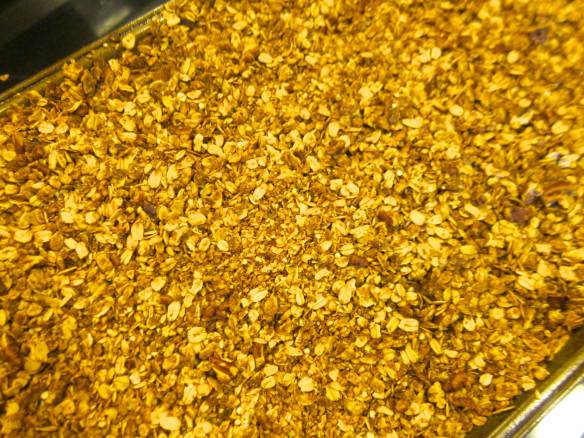
(Note: You know those delightful clumps of granola you find in the store-bought boxes? The only way to achieve that result is by adding a ton of fat and sugar to get things to stick together. Considering the trade-off, I’ve grown accustomed to the better-for-you version with its smaller-than-desired, regular oat-sized pieces.)
The Upshot
So enjoy your granola, my friends—I’m posting it on my blog, after all—but keep it as a treat. Although heart-healthy oats are great for you, granola’s “natural” and “health food” status are misleading at best. (And don’t get me started on granola bars, which are generally high-calorie desserts loaded in sugar, fat, and sodium.) If you don’t feel like making your own, be sure to compare nutrition labels and ingredients and you’ll see the major difference in composition. It’s generally best to avoid “low fat” brands, which usually just have more sugar. Also check for the type of fat used; poly- or monounsaturated are best. Store bought versions vary, of course: brands made with soy or other protein sources provide a better balance of nutrients to keep you satiated throughout the morning.
All that said, though my recipe is made with canola oil (a monounsaturated fat) and has some other nutritious stuff in there, it’s still an energy-dense, sweet treat that should be considered as such and enjoyed only every now and again.
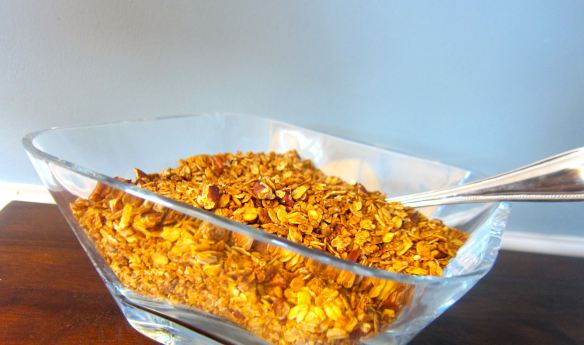
After all, it’s no oatmeal.

